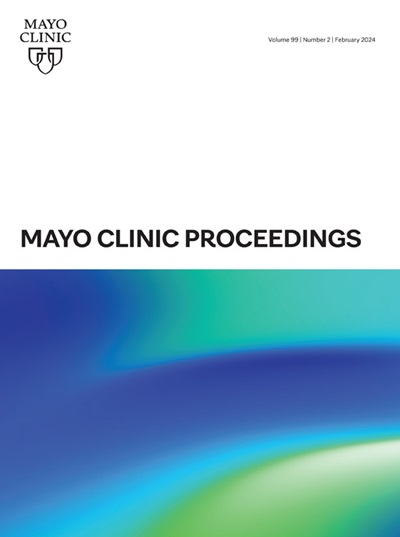Relevance of High Bleeding Risk and Postdischarge Bleeding in Patients Undergoing Percutaneous Coronary Intervention
IF 6.9
2区 医学
Q1 MEDICINE, GENERAL & INTERNAL
引用次数: 0
Abstract
Bleeding avoidance strategies are critical in the modern era of percutaneous coronary intervention; however, most efforts are geared toward reducing access-related complications. Improvements in procedural techniques (radial access, improved procedural anticoagulation regimens, etc) and modifications in postdischarge pharmacotherapy (shortened dual antiplatelet therapy, genotype-guided P2Y12 inhibition, etc) that led to a decline in bleeding related to percutaneous procedures were largely offset by increases in complexity and performance of percutaneous coronary intervention in high-risk patients. Among patients presenting with acute coronary syndrome, aggressive antiplatelet regimens with potent P2Y12 inhibitors are typically prescribed for a longer duration, prioritizing reduction in ischemic events over bleeding risk. Because postdischarge bleeding connotes an adverse prognosis similar to an ischemic event, postprocedure freedom from adverse outcomes can be best tailored by individualizing and recognizing the patient’s bleeding and ischemic risks. This review of the contemporary and historical literature (PubMed, EMBASE, Cochrane Library) summarizes the available data, provides strategies to navigate these complex decisions, and helps individualize antithrombotic therapy.
经皮冠状动脉介入治疗患者高危出血与出院后出血的相关性
避免出血策略在现代经皮冠状动脉介入治疗中至关重要;然而,大多数努力都是为了减少与访问相关的并发症。手术技术的改进(放射状通路,改进的手术抗凝方案等)和出院后药物治疗的改进(缩短双重抗血小板治疗,基因型引导的P2Y12抑制等)导致经皮手术相关出血的减少,在很大程度上被高风险患者经皮冠状动脉介入治疗的复杂性和性能的增加所抵消。在出现急性冠脉综合征的患者中,积极的抗血小板方案与强效P2Y12抑制剂通常需要更长时间,优先考虑减少缺血事件而不是出血风险。由于出院后出血意味着类似于缺血事件的不良预后,因此可以通过个体化和识别患者的出血和缺血风险来最好地定制术后不良后果。本文回顾了当代和历史文献(PubMed, EMBASE, Cochrane Library),总结了可用的数据,提供了应对这些复杂决策的策略,并有助于个体化抗血栓治疗。
本文章由计算机程序翻译,如有差异,请以英文原文为准。
求助全文
约1分钟内获得全文
求助全文
来源期刊

Mayo Clinic proceedings
医学-医学:内科
CiteScore
16.80
自引率
1.10%
发文量
383
审稿时长
37 days
期刊介绍:
Mayo Clinic Proceedings is a premier peer-reviewed clinical journal in general medicine. Sponsored by Mayo Clinic, it is one of the most widely read and highly cited scientific publications for physicians. Since 1926, Mayo Clinic Proceedings has continuously published articles that focus on clinical medicine and support the professional and educational needs of its readers. The journal welcomes submissions from authors worldwide and includes Nobel-prize-winning research in its content. With an Impact Factor of 8.9, Mayo Clinic Proceedings is ranked #20 out of 167 journals in the Medicine, General and Internal category, placing it in the top 12% of these journals. It invites manuscripts on clinical and laboratory medicine, health care policy and economics, medical education and ethics, and related topics.
 求助内容:
求助内容: 应助结果提醒方式:
应助结果提醒方式:


